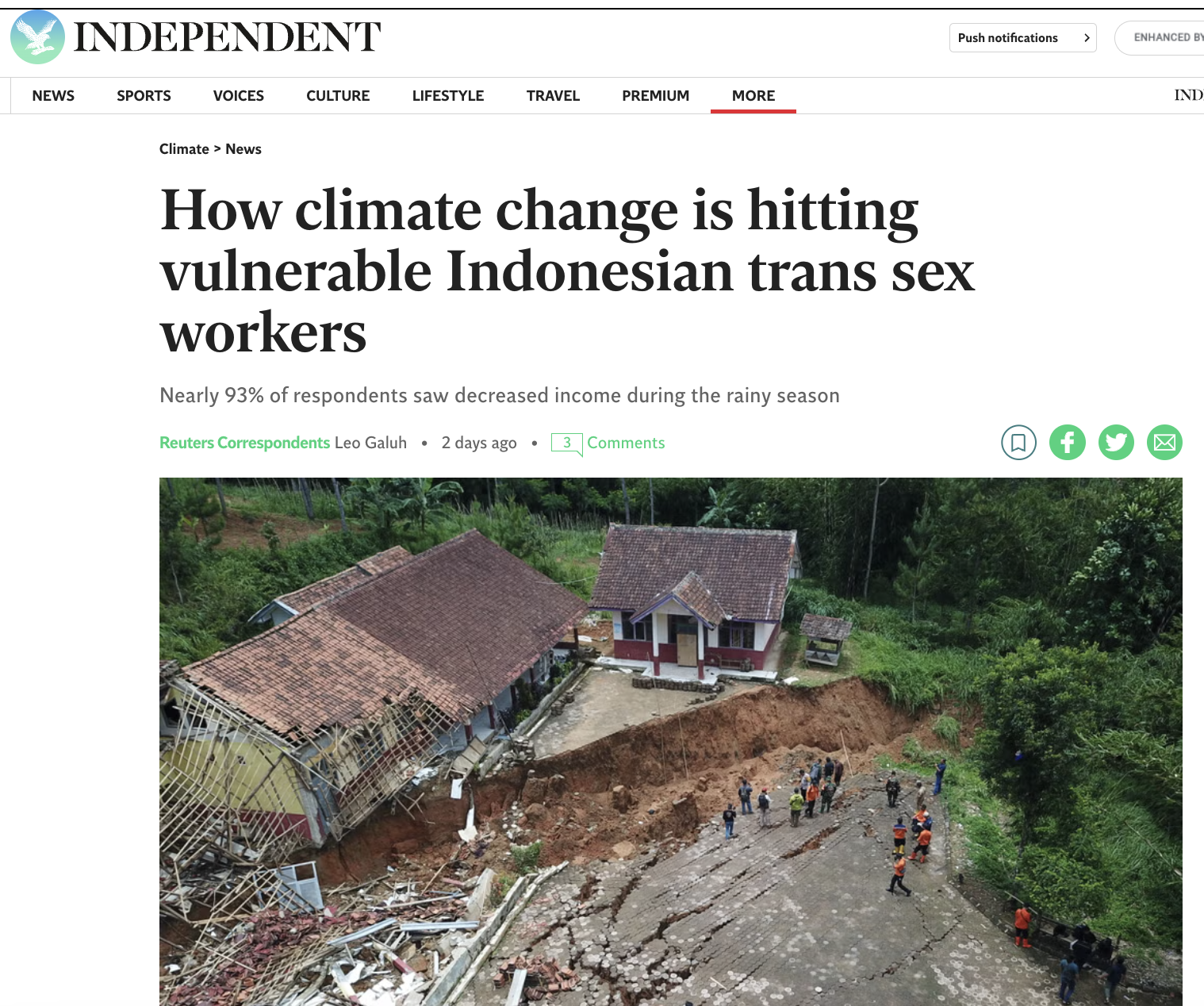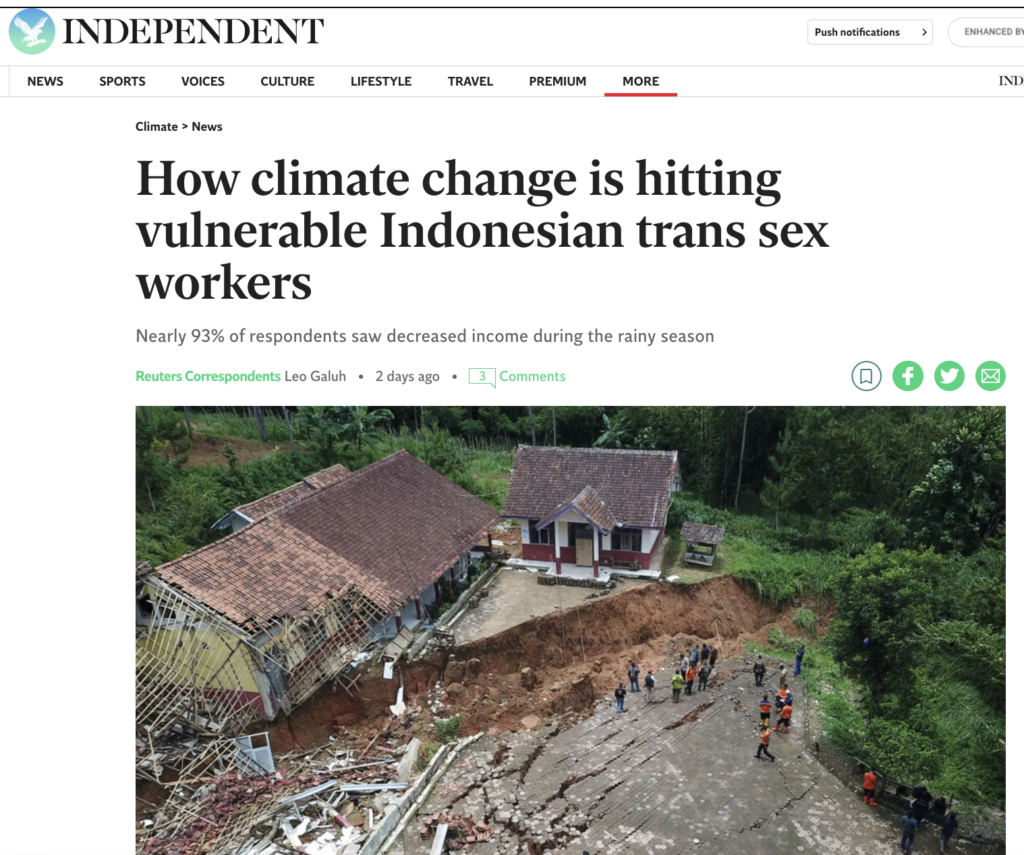https://climaterealism.com/2022/12/live-science-misleads-on-extreme-weather-tipping-points-and-polar-bears-among-other-topics/?vgo_ee=XQZTM02jxyWNqK1SDKHp%2FHwFoqDlMHNmyq65fGLdufk%3D By Linnea Lueken Live Science misleads readers with a recently posted “listicle” discussing ten types of extreme weather events which it says became further proof in 2022 that climate change is causing an impending climate “disaster.” The claims therein are either false, incomplete, or misleading. Three claims Live Science made in its list stand out as particularly egregious: that the Earth is seeing worse and more unpredictable weather patterns; that polar bears are starving and desperate for food; and that we are rapidly reaching climate tipping points that spell doom for the world. None of these claims has any basis in data or historical evidence. The article, “10 signs we got closer to climate disaster in 2022,” written by Live Science managing editor Tia Ghose, claims that the Earth is warming dramatically, and this warming is causing a plethora of negative effects that prove “Earth’s climate is out of control.” While the article is full of climate fallacies, three are particularly egregiously mistaken or misleading. Number four on Ghose’s list of an impending climate disaster is “climate chaos” which she described as “[u]nchecked greenhouse gas emissions will not only warm the planet; they will make weather patterns more erratic and unpredictable.” Number six, on Ghose’s list is closely tied to number four, “worse weather.” No real-world data exists supporting the claim that the Earth’s climate is suffering from some type of “weather whiplash.” Indeed, as explored in Climate Realism, here, here, and here, for example, data do not provide evidence of any significant change in how quickly the weather can turn. Additionally, no type of extreme weather event has a measurably worsening trend over the past thirty years, the time period over which “climate change” is measured. This is not the first time Live Science has made the claim that weather is worsening globally, despite the fact that weather data shows nothing of the sort. Hurricanes, cold snaps, tornadoes, and other commonly cited weather events, show no sign of increasing in frequency or intensity. Live Science has been refuted on this exact point before in a Climate Realism post, here. Number five on Ghose’s listicle claims polar bears are suffering from climate change, causing them to forage on trash: “Dumpster-diving polar bears.” Ghose claims that, because of sea ice losses, polar bears are forced to scavenge closer to human settlements, including landfills. The claim that polar bear hunting grounds are suffering massive losses is at best exaggerated. In Western Hudson Bay, for example, Canada’s “polar bear capitol,” has seen no significant decline in sea ice or a trend towards late in the season freezes, as discussed in the Climate Realism post, “Wrong BBC – No Evidence for Your Claim that Churchill is Simply Getting Too Warm for Polar Bears.” Research done by Arctic scientists, including Susan Crockford, shows that polar bear populations have been increasing, and possibly 6,000 bears have been added to the population since just 2016. In regions where summer sea ice has declined, the hypothesis that seals would decline and cause bear starvation has not panned out—the opposite actually occurred in a study region in Chukchi. Larger populations of bears and humans in the same regions would logically cause more human-bear contact, no catastrophic climate change required. Polar bears, like black and brown bears, are opportunistic feeders. When edible trash is available, they take advantage of it. Availability and delectability, not lack of other options, is the reason some polar bears are dumpster diving. Ninth on the Live Science list is the impending “Point of no return,” with “[t]ipping points beyond which the climate begins irreversibly breaking down could be reached at much lower temperatures than past models suggested,” Ghose writes. “All tipping points will be reached if Earth’s temperature rises 2.7 F (1.5 C) above preindustrial levels.” The doomsday value appears to have already been surpassed in Europe, with no disastrous results, as discussed in Climate at a Glance: Tipping Point – 1.5 Degrees Celsius Warming. (See figure below) Figure 1: Berkeley Earth average European temperature. (http://berkeleyearth.lbl.gov/regions/europe) Predictions of tipping points are convenient because they happen at unspecified times in the future, rely on computer model projections rather than hard data, and can’t be falsified easily because of the inherent chaotic properties of the Earth’s climate over time. None of the catastrophic climate predictions of the past have come to pass, even as the planet has warmed and people have added carbon dioxide to the atmosphere. Evidence actually points to the contrary, as pointed out in this Climate Realism post, here, one paleoclimate study from the University of Washington actually shows that the buildup of atmospheric carbon dioxide is actually very unlikely to cause rapid change. Most rapid changes in global climate appears to be driven by shifts in oceanic circulation patterns. Live Science seems to shoot from the hip on their climate and weather related articles, with dozens of posts claiming individual storms, threats to species, and public health issues, are caused by climate change. In reality, available hard data shows: no trend in worsening weather; polar bear experts acknowledge that polar bears are thriving, despite some ice loss in certain regions; and climate tipping points are mere exercises in computer simulations of disaster scenarios, from models that even climate scientists have been forced to acknowledge are seriously flawed. Contrary to recent claims, it is impossible to attribute any particular instance of extreme weather to long-term climate change. Live Science would serve its readers better if it stuck to discussing fact-based science, instead of engaging in alarmist activism when discussing climate change or any other issue of ongoing scientific debate. Linnea Lueken https://www.heartland.org/about-us/who-we-are/linnea-lueken Linnea Lueken is a Research Fellow with the Arthur B. Robinson Center on Climate and Environmental Policy. While she was an intern with The Heartland Institute in 2018, she co-authored a Heartland Institute Policy Brief “Debunking Four Persistent Myths About Hydraulic Fracturing.”


